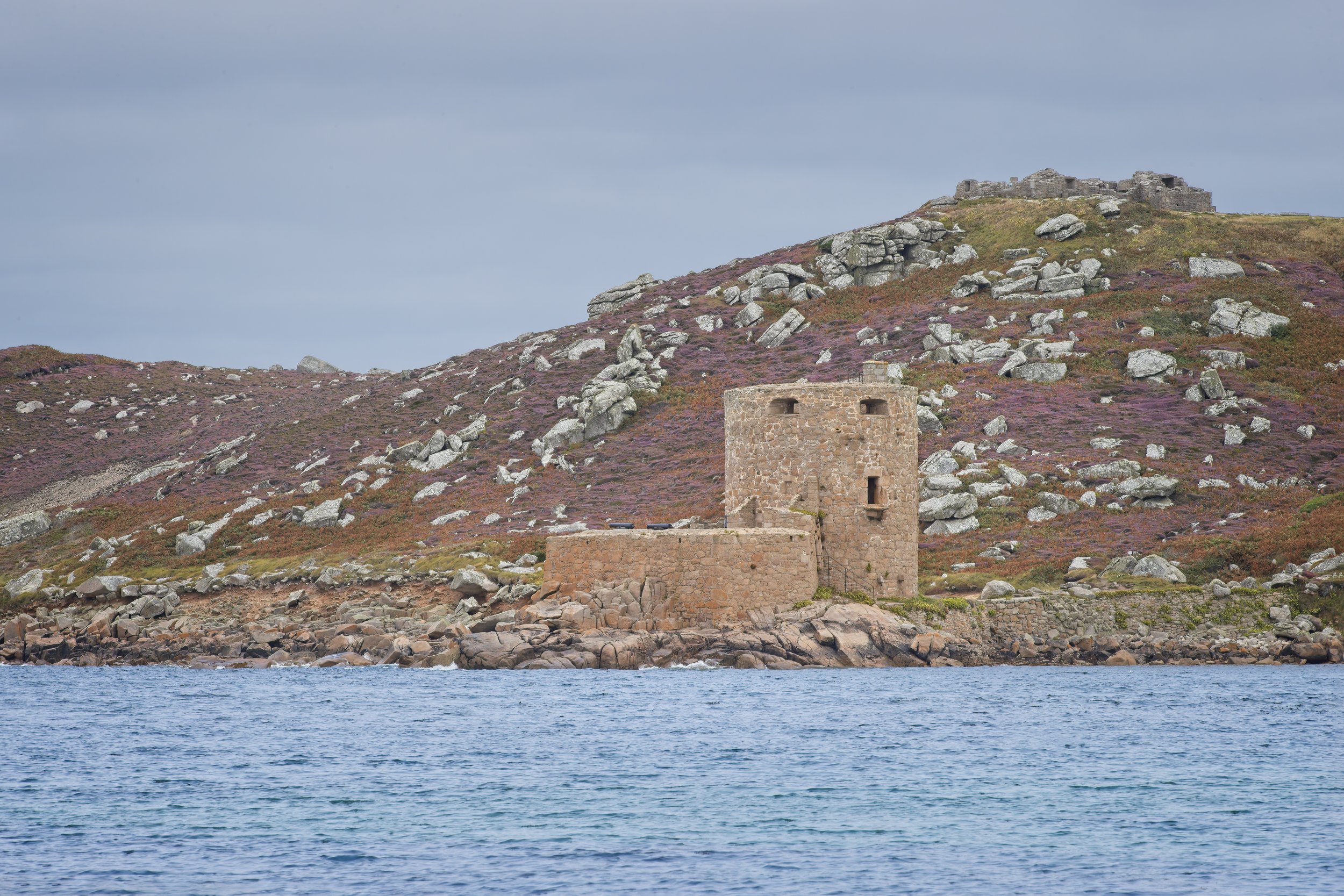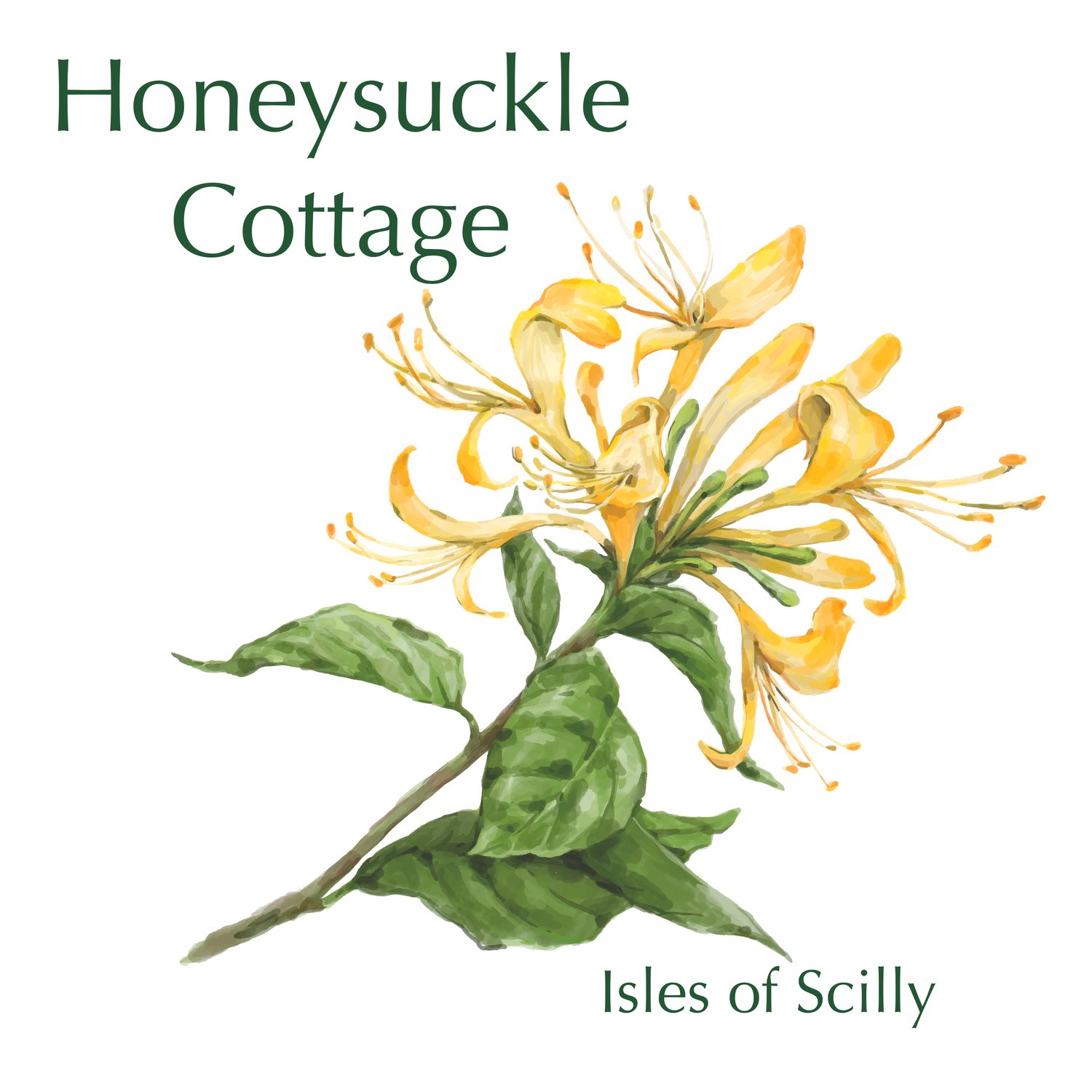The Islands
-

St Mary's
St. Mary’s is the largest island (population over 1,800) and the main hub for access to the other islands (or as they are known locally - “the off islands”). St Mary’s is little more than 6 square miles.
Hugh Town is the main centre with shops, churches, post office, cafés, galleries, restaurants and pubs.
The Quay is where the Scillonian III passenger ferry docks. It’s also where you'll find the day tripper boats to the off islands.
Old Town is a short walk away and boasts its own beautiful beach, nature reserve, Old Town Church where Sir Harold Wilson is buried, shop, pub and cafés.
Away from the two “towns” and away from the hustle and bustle you will find spectacular scenery. The coastline features large stretches of deserted white sandy beaches, dramatic rocky coves, stunning seascapes, amazing archaeological sites, beautiful walks and scenery along miles of coastal and country paths and nature trails. (And not forgetting the beautiful Holy Vale!)
-

Tresco
Tresco is the second largest of the islands. Here you will find tropical gardens with exotic plants and even its own population of Red Squirrels.
This island has dramatic rocky outcrops, bronze age burial sites and castle ruins. There are many secluded sandy beaches to explore. The famous Tresco Abbey Garden hosts a spectacular collection of more than 20,000 exotic plants from all corners of the world – many of which cannot be grown anywhere else in Britain and yet they thrive in the mild climate of Scilly.
The north of the island is a great place to walk and explore, it is more rugged and quiet, while in the centre of the island, there are bird hides to seek out around Tresco’s freshwater pools.
-

Bryher
An island of two halves. The Western side including the well named “Hell Bay” is pounded by Atlantic waves (next stop USA!) and yet the Eastern side boasts calm sandy beaches and views over to Tresco. Only around 80 people are lucky enough to call it home.
Never busy, Bryher is the place to come for quiet exploration including exploration of rocky coves, lazing on white sandy beaches and hiking up one of its small granite hills for some great views. Bryher serves up a wonderful sense of freedom and purity. You can admire the granite stacks on Shipman Head - and get up close at low tide if you're happy to scramble the rocks; you can watch the Atlantic rollers thunder into Hell Bay (spectacular in winter!), and you can enjoy the calm and tranquillity of Rushy Bay overlooking Samson.
-

St Agnes
The most South Westerly inhabited island. St. Agnes is totally unspoilt and absolutely beautiful.
This island is easy to explore on a day trip and you will find lots of rocky outcrops on its exposed west side with paradise beaches in its more sheltered coves. There is a sandbar which connects the island to Gugh on low tides meaning a well timed visit could result in you exploring two islands in one!
The middle of the island finds quaint cottages and a patchwork of flower fields, while a lighthouse stands at the island’s highest point, although no longer in operation. You will also find small churches, a post office and what miust be one of the UK’s smallest schools. Explore further and you might just come across the local ice cream business - Trytown Farm Ice Creams!
-

Gugh
Technically joined to St Agnes by a low tide sand bar and sometimes included with St Agnes to describe five inhabited islands. Gugh is very different to St Agnes and so we treat it as the sixth inhabited island.
Here you will find a rugged coastline with views back over towards St Mary’s. The middle of the island is wild with overgrown stone walled fields, pittosporum hedges and lots of wildlife.
Measuring just 1km long by 0.5km wide, it is a small island. Two houses stand over-looking the sand bar.
-

St Martin's
Marking the Northern border of the islands St Martin’s has crystal clear waters, idyllic, long beaches, which are never busy and beautiful shallow seas where you can often spot Grey Seals. If you arrive on the Scillonian this will be the first island you see with its iconic red and white Daymark.
The island is two miles long and it has some of the finest beaches in the British Isles, if not the world. Take your pick from Lawrence’s Bay, Par Beach or Bread and Cheese Cove, Great Bay or Little Bay.
Additionally, the spectacular flower fields, plant life, rare birds and sensational sea views along the heathery cliff path walks all add to the thrill of St. Martin’s unmistakable beauty.
There is a population of about 120 on the island. You will find a flower farm and vineyard, a dive school, a locally-inspired silver jewellery designer, a flourishing bakery and a wonderful gallery showcasing local artists.
-

Uninhabited
The Isles of Scilly is the UK’s largest archipelago.
The uninhabited islands can sometimes be explored from the St Mary’s tripper boats. Many of them boast fascinating names such as Great Arthur, Hangman’s Island, Old Man, Hunter’s Lump, Seal Rock and Great Cheese Rock.
Some of the uninhabited islands once supported small communities. Tean, St. Helen's and Samson being the best known. You may even spot some of the remains from these habitations.
-

Rocks
As well as the habited and uninhabited islands there are perhaps hundreds of rocks that appear and disappear according to the tides. As a result the waters around the islands are littered with tragic shipwrecks that have taken place over the centuries. The Western Rocks are a permanent memorial to the countless seamen lost on Bishop Rock – a 50-metre rock column that is totally covered at spring high tides – and on which the UK's most south-westerly lighthouse now stands.
You can take a boat trip out of St Mary’s to witness many of these rugged and wild outcrops from the water, marvelling at the abundant bird life, colonies of seals and stunning seascapes along the way.
-

Maps
Click below for a couple of maps.
